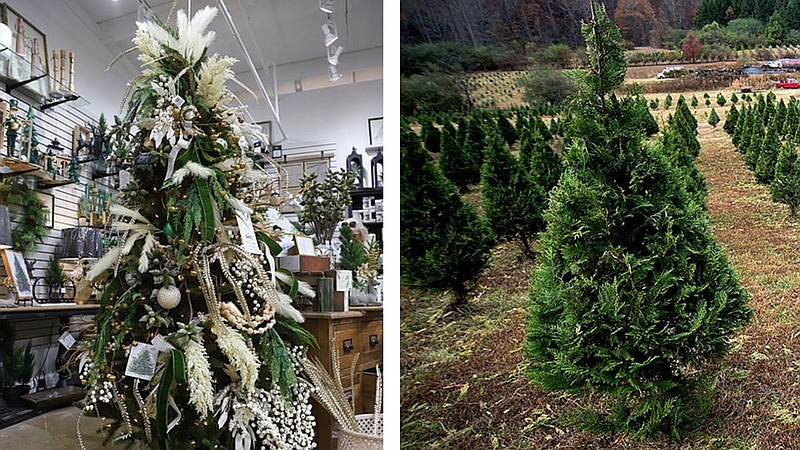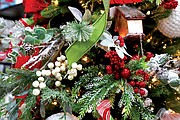It's beginning to look a lot like Christmas earlier and earlier these days. Since the pandemic, Jason Rymer, gardens category manager for Elder's Ace Hardware, says people are seeking solace, and there's nothing like holiday decor for a dose of joy.
"As soon as Halloween is over, people are ready to put up their tree," he says. "The holidays give a little bit of a respite from all the junk that's going on in the world, and if they decorate their house, it gives them an escape. They can come home, light up the tree, turn off the news and just enjoy the season."
Whether that tree is real or artificial largely comes down to tradition versus ease of maintenance, with the American Christmas Tree Association (ACTA) reporting that 77% of the trees that will warm people's homes this year will be artificial. That's in line with what Rymer says he sees locally.
"Your families with small children like the nostalgia of a real tree, the smell of a real tree, but it seems that as folks get older and the kids move out of the house, the parents need something that's easier to put up, so they move back to artificial," he says.
While that's been the trend for a while, one thing that is shifting is how many people put up a tree. Prior to the pandemic, the percentage of American households decking their halls was in the 70s; this year, it's 94%, according to the ACTA.
Additionally, more people are seeking the experience of cutting their own Christmas tree. Adam Kittle is a third-generation Christmas tree farmer in Ringgold, Georgia, and says that the first year of Covid brought a 24% spike in sales.
"I guess everybody wanted some kind of sense of real," he says. "It's really not the tree we sell; it's the tradition, Christmas memories. Anybody can go to Walmart and buy a tree. They even sell real trees there. Here, you get to come cut it down yourself. It's a family experience."
Though he hasn't done the math since then, the farm has continued to sell out of its available trees before the season is even fully underway.
"Before Covid, we would be open all season until Christmas," says Kittle. "Now, we normally close the second weekend of December," after having already run out of inventory.
The National Christmas Tree Association (NCTA) reports that choose-and-cut farms accounted for nearly 31% of live-Christmas-tree sales in 2022, almost double that of any other purchase method.
The rise in demand has challenged the available supply, as real trees can take eight years to grow. Kittle says most of his varieties -- white pine, Leyland cypress and Carolina Sapphire -- take four to six years to grow. He also notes that several local operations permanently closed up shop during the pandemic. And this year, some tree lots won't be open due to the effects of the Canadian wildfires and drought, reports ABC News.
"Pre-pandemic, Christmas live-tree sales had really dropped off; then the pandemic brought them back to the forefront," Rymer says. "There are just not enough trees out there to support it. It's getting better, but it's not where it needs to be. Thankfully, on our end, we've used the same vendor for years, so we have a certain number of trees that have been 'locked up,' but even with that, we've not been able to get extra trees."
Kittle and his family have been busy adding more new crop to their farm, so they will have plenty available this year, he says. But the white pines, which are typically the most popular for him, take longer to grow than other varieties. So if people have their heart set on one, they should go early. Similarly, Rymer says those seeking taller pre-cut live trees should also shop early to avoid being disappointed.
"Used to be, the most popular tree was a 7- or 8-foot tree," he notes. "Now, everybody wants 8s, 9s and 10s, which take longer to grow, so there is a shortage issue."
Still, there should be enough holiday cheer to go around, so long as shoppers remain flexible, NCTA says.

